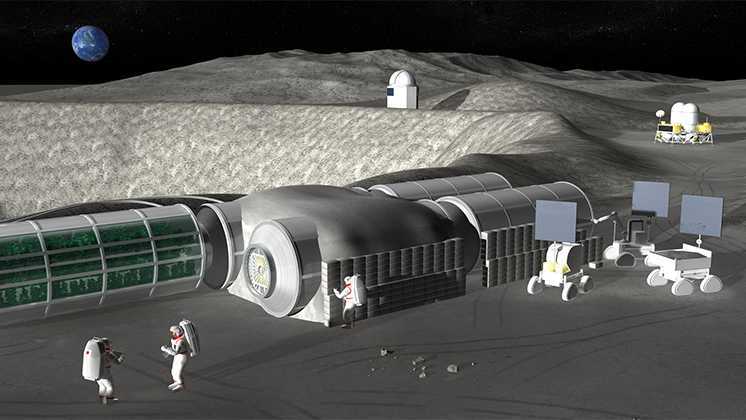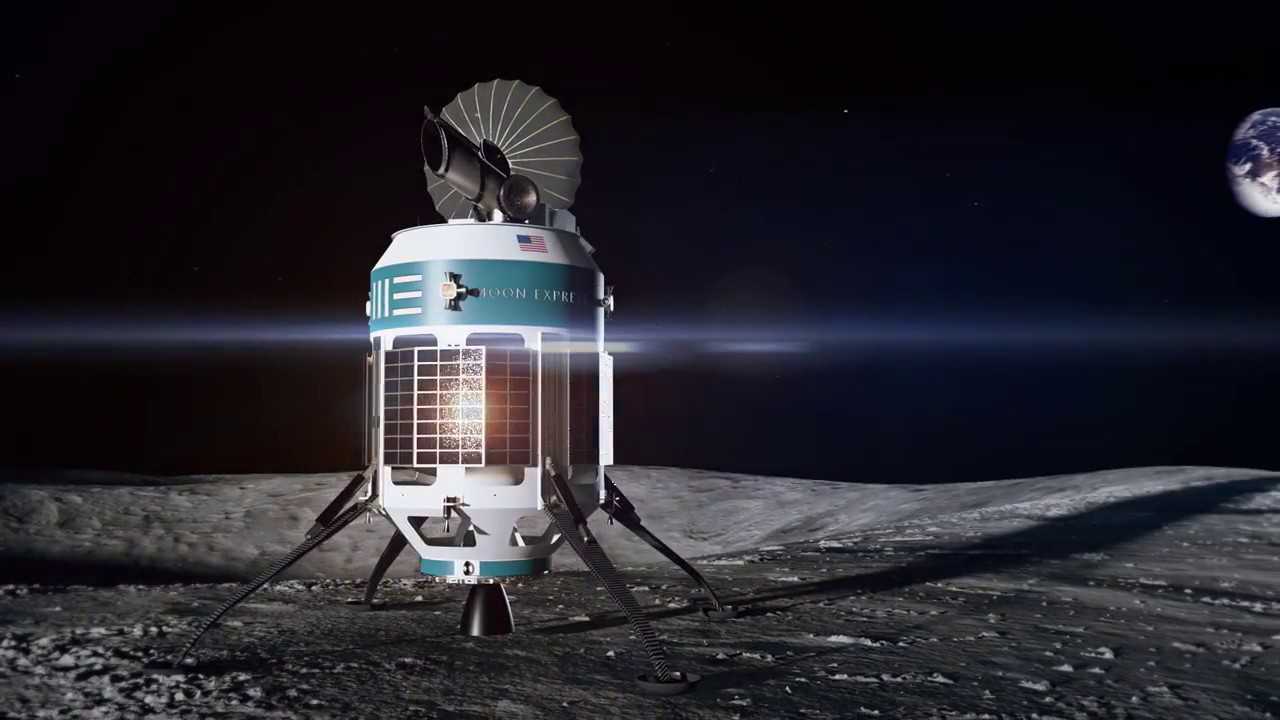Something completely out of the blue appeared when it was announced that Japan is trying to land on the moon. What the biggest countries and most advanced nations have been thinking for decades, is taking a new turn. With developing countries like India trying to land their robots on the moon with the help of Chandrayaan I and II, this is a great feat by the tiny island country.
They’re spending over $2 Billion to build a robot moon base and that too by the end of 2020. This is a thing that can be realized sooner than other ambitious projects far into the future. So, you can just have your fingers crossed for one more year. It must be noted that some of the companies in Japan, like Sony and Samsung have been working on humanoids for a long period in history, and this landing by robot moon is not entirely a shock. However, it sure is exciting not just for the Japanese but also for everyone on the planet. It is also a big push to the field of robotics.
What is a Lunar Outpost?
It might have been a familiar thing owing to numerous movies and commercials back in the good old days from the 1950s. Even before color movies came, and black and white was all the rage, movies about humans on the moon has been the bread and butter of the humans on the earth. This was made possible by the first footsteps of Neil Armstrong. He was the first person to ever walk on the moon and made history. Also, his buddy who despite the worthy fame of walking on the moon, chose to stay behind to monitor the instruments and take pictures instead. The sacrifice by this Buzz Aldrin will always be remembered as the most instrumental in making this mission a success. So, it is always gladly remembered that Buzz and Neil both were the first persons to land on the moon.
A lunar outpost has been the dream of the US since that first trip, but even with the Trump Presidency, this has not been realized. According to NASA, there simply is no objective or enough funds to even make another trip to the moon and back. However, other nations, like Japan have never had a chance to do so, and they attempted to make history with the humanoids announcing their plans in 2010.
The concept of a robot moon base stems from the same movies where you could see a small colony of humans living on the moon for research. The concept of a lunar outpost was made by NASA as a permanent or semi-permanent presence of humans living on the moon, very much like the International Space Station. In 2020, NASA had also requested a budget of $1.6 Billion to make another crewed mission to the moon by 2024. And, that would be followed by a temporary or some kind of moon base by 2028.
And, as far as we know, these ambitious projects have not been approved or are in between the cabinets.
The Journey that Started in 2010
The design for early lunar post capsules have been there since the early 1990s, and NASA had taken a lot of concepts and made them into sketches. There are sketches where these posts could hose 6 to 12 people. There are concepts based on the famous ISS Cupola design. With these concepts from such time back, Japan was committed that such as moon base in the space is essential for the exploration of the solar system, which is simply not possible from the surface of the earth. And, back in 2010, Japan announced its plans to send robot moon astronauts or humanoid robots to the moon to construct a robot lunar base. This would mean that no crewed missions would be needed and there would be no danger to human life.
As a part of the $2.2 billion project, the robots will begin surveying the moon around 2015, and then build the unmanned base near the moon’s South Pole by 2020. All these ideas were not entirely out of the world, and very much possible. A Japanese government panel chaired by Katsuhiko Shirai, President of Waseda University had developed an outline of the complete project and was approved by their government. First, the robots that would weigh up to 660 pounds each will begin surveying the moon, taking images, collecting rock and soil samples and returning them to the Earth. These samples will be returned to the earth via rockets and will be studied for seismographic research and activity. Once, an ideal base is found, the robot moon will be sent to the moon to begin constructing the lunar base for themselves. It will be totally monitored from the earth and will pose zero-risk to humans doing the same work at 1/6th of the gravity.
According to the govt panel, the robot’s unmanned missions will be powered by solar energy and the robots will be controlled from the earth. With the distances being small, this remote control was possible with little latency, making this a feasible solution. The robot moon will be autonomous; meaning that the humanoids will be capable of a large degree of autonomy and that will enable them to operate on their own several crucial tasks, including navigation and construction. Ultimately, the base could serve as being ready for the humans to land and colonize the moon in a short span without having to send several crewed missions to build from scratch. By the time humans would arrive, the base would be waiting for them with security and assistance from the robots out there.
The Current State of Moon-Base Race

The latest news in this field comes from Gingrich?who is pushing $2 Billion Moon-Base Race and has harbored the dreams for a moon colony for a very long time. Announced in 2019, Newt Gringrich is still big on moon dreams and is trying to fulfill Japan’s adventure with or without humanoids. This is none other than the US, where the former speaker of the US House of Representatives made headlines during his 2012 presidential run by promising a lunar colony up and running by 2020 if he becomes the president. And, now he has sold this idea to Trump, which is why we keep hearing things like the ?Space Force? and the next trip to the moon by women if he is elected for a second term. Though none of this president’s claims have ever been fulfilled and he has been allegedly involved in some of the shadiest deals during the four years, and throughout his life, the idea of making a colony on the moon is a novel one. But, how essential is it for the humankind? What insight will it provide? As NASA has pushed for this, it can be well accepted that there are more than just cool things to do in this regard and it is a crucial step towards knowing where we stand in the solar system, and the universe.
According to Politico, Newt Gringrich tried to sell the idea of a $2 billion competition to set up a crewed mission to the outpost on the moon, the earth’s nearest neighbor.
This proposal would incorporate lots of things. This has put billionaires like Jeff Bezos and Elon Musk to the race for pioneering rockets that can fly you to space and maybe establish the first base on the moon. These pioneers are set against each other trying to be the first in the attempt and to successfully do so with private funds and research. This means NASA can no longer claim to be at the forefront of space race because several private organizations are trying to compete too apart from individual govt agencies from several nations like Russia, India, Japan, China and many more.
The backers of this novel approach have briefed the administration that officials serving the National Space Council have confirmed that they decline to provide specifics of the conversations. The outlet has added that this could be a serious problem. Some of the advancements by SpaceX have been a noted success. The companies run by Elon, the Space X, and Jeff, the Blue Origins, respectively would become the front runners to bag this $2 Billion award, and notably, they are both US companies. In fact, there is hardly any competition from any other private player anywhere in the world, because they simply lack the resources and the edge of having tested so many rockets and trials already.
SpaceX is already building a large 100-passenger spaceship that will give you a trip to space and back called the Starship, famously from Star Wars. As early as 2021, their huge rocket, probably the biggest the world has ever had after the Saturn 5, the Super Heavy could start carrying these spaceships to space by 2021. On the other hand, Blue Origins recently revealed that they have been working on a Blue Moon lunar lander which will be sent at the top of the New Glenn rocket to space. Thus, both these entrepreneurs are fans of Gingrich’s plan.
On the other hand JAXA, Japan’s space agency’s plans to send humanoids on the moon has been just that. We have not heard any news after 2015 when the plan was delayed and is still under progress, just to speculate. In some of the articles, it was also presented that the date has been pushed back to 2025.
50 Years Ago, when it All Started

Back when the first concept of a moon landing was fulfilled and realized, the current generation of entrepreneurs with billion dollars to spend was not even born. But, scientists from NASA made immense efforts with the help of so-called transistor-computers from IBM and made the small calculations in trajectory and finally landing the Apollo. It was a huge success. Today, with the technology that has grown to such a large scale that we have computers 10,000 times more capable in our palms, smartphones, and yet, we are nowhere near the dream of making a moon base or another moon landing. The problem has been political and other interests.
According to the recent news from JAXA, there has been a change in the plans. And, this article claims that JAXA has pushed back the robot moon base mission to 2029. JAXA to one-up US space agency with its Toyota-produced moon rover. They now want to send the first real autonomous car to the moon rather than the humanoid robot. The American Lunar Roving Vehicle also called the ?Moon Buggy? was a battery-powered and four-wheeled rover used on the moon in 1971 and 1972 by the astronauts of Apollo missions. These were unprotected and unpressurized buggies with open roofs. But, not Toyota has been asked by the Japanese govt. to design a lunar vehicle more like a real car.
These will transport the Japanese astronauts to long lunar trips by the year 2029. Toyota and the Japan Aerospace Exploration Agency (JAXA) has signed a three-year contract with Toyota to develop a fully-pressurized fuel-cell-powered electric vehicle for the moon trip. They have already developed a prototype to be unveiled in 2022. The flight model will be designed by 2024 and the testing will commence by next year. Over the course of these three-years, JAXA and Toyota, will manufacture, test, and evaluate prototypes of their robots to develop a manned pressurized lunar vehicle that can explore the surface of the moon.
Toyota has plans to do a lot of stuff. It says that once developed, it will either rent or sell them to the Americans so that they should have a moon base on the South Pole by 2029. They are also targeting the Europeans, who are optimistic about a moon village. The European Space Agency is planning for a ?Moon Village? at the lunar’s the South Pole. Americans and Europeans will eventually travel long distances on Toyota’s cars and this will be really useful. The Japanese Moon Car will be used by any country willing to have the base there.
Concluding Race to Moon
The MELTANT was another ambitious project released to the public earlier this year. This is supposed to be disposed to the moon and mars. Only time will unveil the true success of the human race.



Follow us for more updates
Follow us for more updates